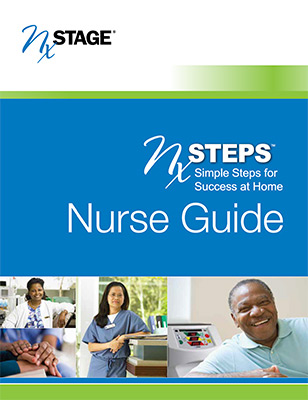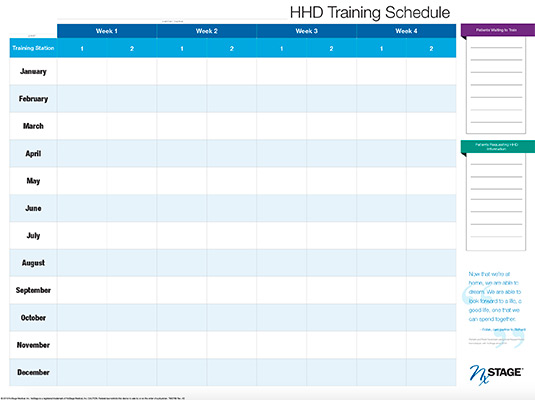Area of Focus 1
Train Consistently and Well Detailed Results
When we think about patient success at home, it’s important to remember any interested and engaged patient should be given the opportunity to try. It is equally as important as trainers, we realize the more experienced a training team is, directly relates to the success of their home patients. However, it isn’t just the volume of training that is critical to patient success. In fact, the NNI Cover Story, Strategies to Optimize Patient Retention in Home Hemodialysis, uncovered a variety of training elements such as, expectation setting, training adaptability, and training flexibility as important practices for facilities who saw the most patient success.
Setting expectations for patients prior to training helps avoid frustrations during training. Proactively meeting with patients or giving them the opportunity to speak with other current home patients also helps them understand their responsibilities as a home patient.
In addition, training adaptability by using a variety of tools and techniques to accommodate every learner’s preference and pace helps ensure a successful experience. Creativity in training schedules by allowing evening or weekend hours also help ensure each patient is given an opportunity to train successfully.
If part of the problem is the source of referrals, remember to talk directly with your staff, especially your patient educators and your prescribing physicians to understand if there are any barriers preventing them from referring or prescribing. In some cases, they themselves may need additional education or the opportunity to speak with other referring physicians.
We recommend visiting AdvancingDialysis.org for some important considerations and information around Home Hemodialysis and the benefits of more frequent therapy. The Resource Library is also a great place to start to introduce new information to hesitant or reluctant staff or prescribers. Make sure to also connect with your local Area Representative or Clinical Consultant who can help provide you with additional materials or resources.
Below are a series of additional resources to help provide you with additional training materials, tips and tricks for working with different learning types, or NxStage led refresher courses you can take to keep on top of your own training and education.
The reported benefits of home hemodialysis (HHD) may not be experienced by all patients.
The NxStage System is a prescription device and, like all medical devices, involves some risks. The risks associated with hemodialysis treatments in any environment include, but are not limited to, high blood pressure, fluid overload, low blood pressure, heart-related issues, and vascular access complications. When vascular access is exposed to more frequent use, infection of the site, and other access related complications may also be potential risks. The medical devices used in hemodialysis therapies may add additional risks including air entering the bloodstream, and blood loss due to clotting or accidental disconnection of the blood tubing set.
Home hemodialysis with the NxStage System during waking hours may not require a care partner, provided a physician and a qualified patient agree that solo home hemodialysis is appropriate. Patients performing nocturnal treatments are required to have a care partner. Care partners are trained on proper operation and how to get medical or technical help if needed.
Certain risks associated with hemodialysis treatment are increased when performing solo HHD because no one is present to help the patient respond to health emergencies. If patients experience needles coming out, blood loss, or very low blood pressure during solo HHD, they may lose consciousness or become physically unable to correct the health emergency. Losing consciousness or otherwise becoming impaired during any health emergency while alone could result in significant injury or death. Additional ancillary devices and training are required when performing solo HHD
Certain risks associated with hemodialysis treatment are increased when performing nocturnal therapy due to the length of treatment time and because therapy is performed while the patient and care partner are sleeping. These risks include, but are not limited to, blood access disconnects and blood loss during sleep, blood clotting due to slower blood flow and/or increased treatment time, and delayed response to alarms when waking from sleep.
Patients should consult their doctor to understand the risks and responsibilities of performing these therapies using the NxStage System.




